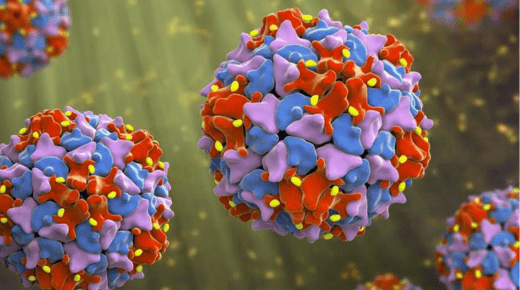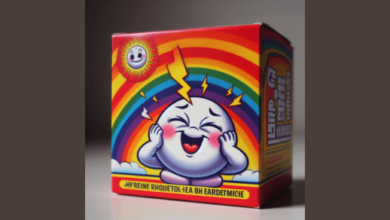
Polio and chickenpox are two distinct infectious diseases caused by different viruses. Understanding the pathogens responsible for these diseases is essential for prevention and treatment. Let’s delve into the causes of polio and chickenpox.
1. Poliovirus: The Cause of Polio
Polio, short for poliomyelitis, is caused by the poliovirus, a highly contagious virus that primarily affects the nervous system. There are three strains of the poliovirus, and infection can result in varying degrees of severity, from mild flu-like symptoms to paralysis and even death.
2. Transmission of Poliovirus
Poliovirus is transmitted through person-to-person contact, primarily via the fecal-oral route. Contaminated food, water, or surfaces can also spread the virus, making sanitation and vaccination crucial for preventing polio transmission.
3. Symptoms of Polio
The symptoms of polio can vary depending on the severity of the infection. Mild cases may present with fever, sore throat, headache, and fatigue, while severe cases can lead to muscle weakness, paralysis, and respiratory failure.
4. Chickenpox Virus: Varicella-Zoster Virus
Chickenpox, also known as varicella, is caused by the varicella-zoster virus (VZV), a member of the herpesvirus family. It is highly contagious and primarily affects children, although adults can also contract the virus.
5. Modes of Transmission for Chickenpox
Chickenpox spreads through respiratory droplets or direct contact with the fluid from the blisters of an infected person. It can also be transmitted through the air when an infected person coughs or sneezes.
6. Incubation Period of Chickenpox
After exposure to the varicella-zoster virus, the incubation period for chickenpox is typically 10 to 21 days. During this time, infected individuals may not display any symptoms but can still spread the virus to others.
7. Clinical Presentation of Chickenpox
The hallmark symptom of chickenpox is a rash that starts as red spots and progresses to itchy blisters, which eventually crust over and heal. Other symptoms may include fever, headache, and loss of appetite.
8. Complications of Chickenpox
While chickenpox is usually a mild and self-limiting illness, it can lead to complications in certain cases. These may include bacterial skin infections, pneumonia, encephalitis (inflammation of the brain), and, rarely, death.
9. Vaccination Against Polio
Vaccination is the most effective way to prevent polio. The polio vaccine, typically administered as an injection or oral drops, stimulates the immune system to produce antibodies against the virus, providing immunity.
10. Vaccination Against Chickenpox
Vaccination against chickenpox is also available and is recommended for children and adults who have not been previously infected or vaccinated. The chickenpox vaccine is a safe and effective way to prevent the disease and its complications.
11. Herd Immunity for Polio
High vaccination coverage within a population can confer herd immunity, reducing the overall risk of polio transmission and protecting vulnerable individuals who cannot be vaccinated.
12. Herd Immunity for Chickenpox
Similarly, achieving high vaccination rates for chickenpox can help prevent outbreaks and protect individuals who are at risk of severe complications, such as pregnant women and immunocompromised individuals.
13. Global Eradication Efforts for Polio
Efforts to eradicate polio globally have been ongoing for decades. Vaccination campaigns, surveillance, and community engagement are key components of these efforts aimed at eliminating the disease.
14. Varicella-Zoster Virus Reactivation
After primary infection with chickenpox, the varicella-zoster virus remains dormant in nerve cells. In some individuals, the virus can reactivate later in life, causing a painful condition known as shingles or herpes zoster.
15. Treatment for Polio
There is no specific treatment for polio once infection occurs. Supportive care, including rest, pain management, and physical therapy, can help manage symptoms and improve outcomes for affected individuals.
16. Treatment for Chickenpox
Treatment for chickenpox focuses on relieving symptoms and preventing complications. This may include antiviral medications, pain relievers, antihistamines, and topical treatments for itching.
17. Prevention Strategies
Preventing polio and chickenpox relies on a combination of vaccination, good hygiene practices, and public health measures such as surveillance and outbreak response.
18. Global Burden of Disease
Polio and chickenpox continue to pose significant health burdens globally, particularly in regions with limited access to healthcare and vaccination resources.
19. Importance of Vaccination
Vaccination remains the cornerstone of prevention for both polio and chickenpox, highlighting the importance of vaccination programs and public health initiatives in reducing the incidence and impact of these diseases.
20. Research and Development
Ongoing research into polio and chickenpox, including vaccine development, treatment options, and disease surveillance, is essential for advancing our understanding and control of these infections.
21. Community Engagement
Engaging communities and promoting vaccine acceptance and adherence are critical for achieving and maintaining high vaccination coverage levels, ultimately leading to disease control and elimination.
22. Surveillance and Monitoring
Robust surveillance systems are essential for detecting and responding to cases of polio and chickenpox, tracking disease trends, and evaluating the impact of control measures.
23. Public Health Response
Effective public health responses to polio and chickenpox outbreaks involve rapid case detection, contact tracing, vaccination campaigns, and public awareness initiatives.
24. Collaboration and Partnership
Collaboration between governments, healthcare organizations, non-governmental organizations, and international agencies is essential for coordinating efforts to control and eliminate polio and chickenpox globally.
25. Conclusion
In conclusion, polio and chickenpox are caused by different viruses—poliovirus and varicella-zoster virus, respectively—and present unique challenges in terms of prevention, treatment, and control. Vaccination, alongside public health interventions and research efforts, plays a crucial role in reducing the burden of these diseases and ultimately working towards their elimination.



